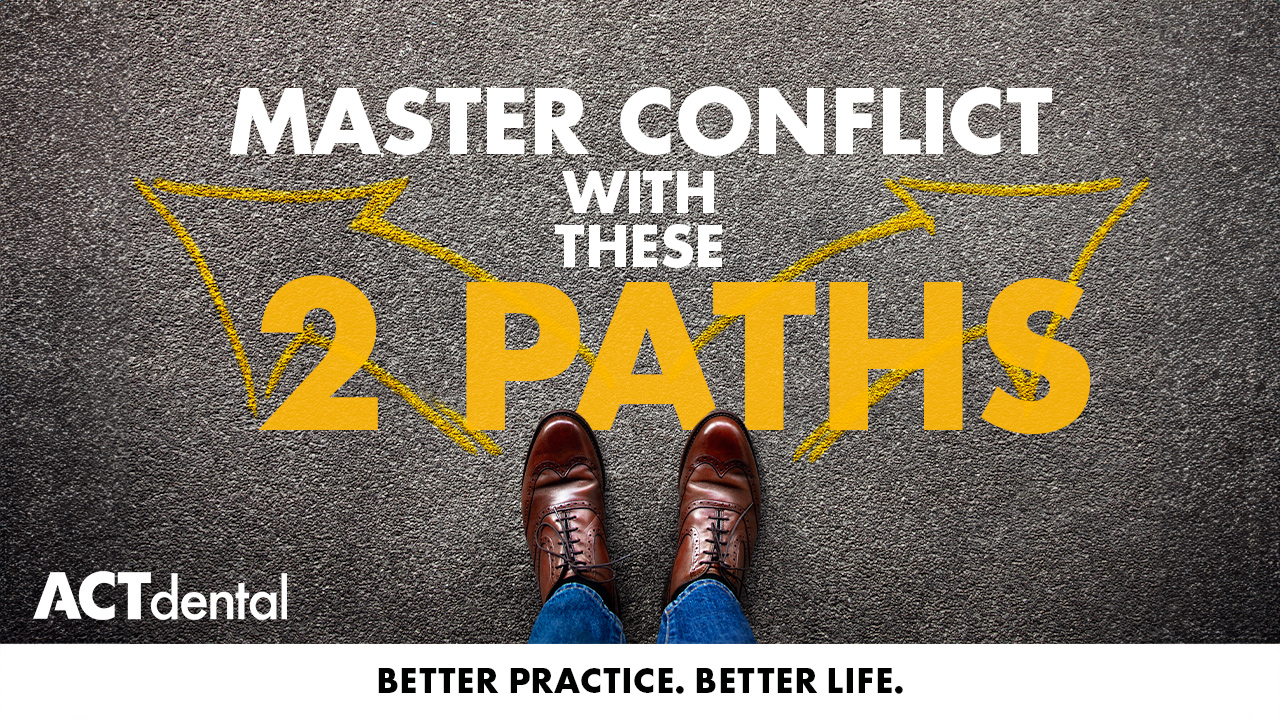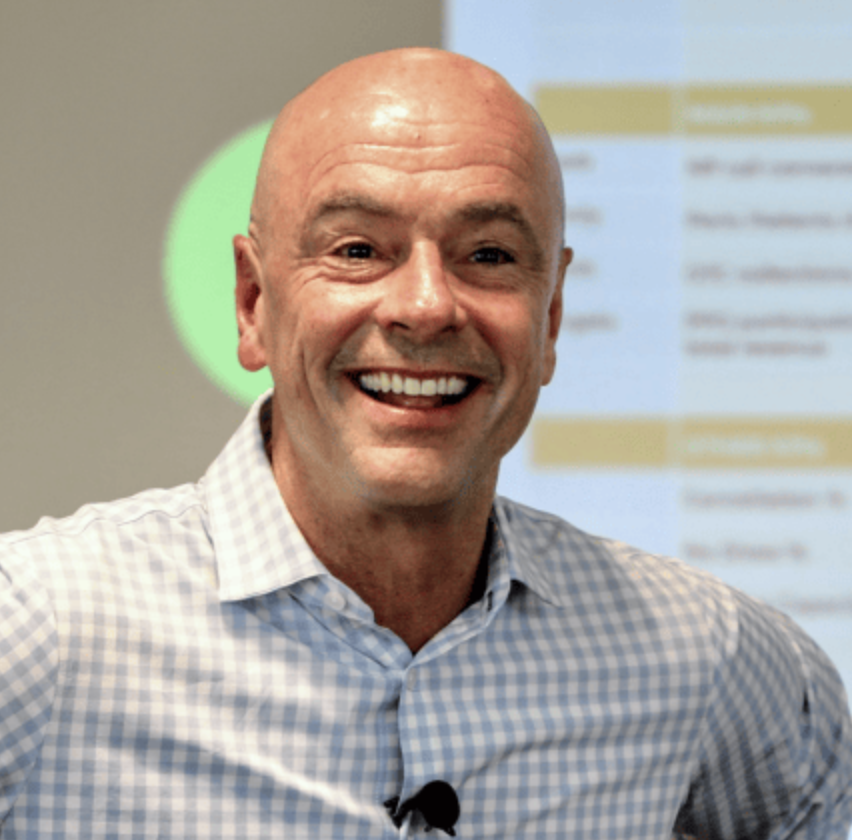For any leader—dentists included—one of the greatest challenges they’ll face is successfully managing people, particularly when there’s conflict. After all, most personality styles are conflict-averse, so we naturally try to avoid it. But like Kirk says, “Unresolved conflict always becomes a crisis,” so learning to become confident about approaching conflict is critical. It’s possible to grow and improve in how we face conflict, but it’s going to take intention and practice.
First and foremost, you’ve got to have the right mindset: conflict is simply conflict, and doesn’t need to be a confrontation. You don’t need to win, be right, or have your solution accepted—instead, be open to a new possibility that might spring from the conversation. As long as it satisfies both parties, it shouldn’t matter who generated the idea. To that end, I want to share two great methods that will help you have better conversations when there’s a problem.
- The ARCH Method
To demonstrate this awesome strategy, I’ll go through each of its steps, using the example of two assistants in conflict because one feels they carry more of the load managing sterilization than the other.
- Acknowledge: To help ease tensions right away, you need to acknowledge or agree upon something. Even though the other person has their own point of view, there’s often a commonplace within the conflict that you can agree on. If you’re looking to gain resolution, think about their perspective—there’s usually something there. E.g., “I agree with you that there are a lot of tasks that we are responsible for, and we should share the load.”
- Request: Next, make a request, either for your solution, an idea from them, or to bring in someone to act as a facilitator. The main idea here is to keep the conversation moving forward. E.g., “I do try to help in sterilization throughout the day, but I’m so busy that I often can’t find the time. Maybe you can share with me how you are able to.”
- Confirm: Once you’ve made your request and created a new agreement, you must confirm the details. I’ve seen too many conversations go wrong and conflict repeat itself solely because what seemed clear was not. To that end, literally summarize out loud what you heard the conclusion and path forward to be, and then ask for confirmation from the other person. E.g., “We can agree that you’ll make sterilization a priority in the first half of the day, and I will do the same after lunch.”
-
- Hope: Finally, end with positive gratitude for the conversation and express your hope for a good or better outcome. This is your opportunity to communicate your optimism about the future of your new agreement. E.g., “I am so glad we talked about this; I wouldn’t want you feeling like I don’t carry my share. I hope trying this new way will lighten the load for both of us!”
The ARCH Method is great because a lot of people like to receive feedback in the form of a positivity sandwich: the tough stuff is layered between two good things.
- The Awareness Wheel
For this second strategy, imagine a wheel. At the center is the issue, but surrounding it are several different components that create awareness of that problem. To illustrate it, this time we’ll use the example of the doctor addressing the issue of a team member consistently arriving late to work.
- Share what is: This is simply an observation that doesn’t point fingers—there’s no subjectivity or feelings here, just the inarguable fact of the matter. E.g., “Our team agreements are that we arrive by 7:10 am so we can start our huddle on time, and three times last week you arrived in the middle of the huddle.”
- Share your thoughts: This is your assumption or perspective about the issue and should be delivered in an “I” statement. E.g., “I imagine that something important is holding you up, or that you don’t realize the impact it has when you arrive in the middle of the huddle.”
- Share your feelings: This is your opportunity to allow the other person to understand your position. It’s about your feelings, not the other person’s! E.g., “I feel concerned that patient care will be affected because you’re missing the important details from the start of the huddle.”
- Share your wants/desires: This is your opportunity to offer a potential solution or path to a different outcome. E.g., “I want for all of us to uphold our team agreements and the start time of 7:10.”
- Share an action or next step: This is your suggestion for how to move forward together. E.g., “I’ll count on you to be here on time moving forward, and for you to let me know if there’s a reason that’s not feasible.”
The interesting thing about the awareness wheel is that it makes everything about me. Using “I” statements throughout, it wards off defensiveness and allows the conversation to keep moving forward. We take the problem, use objective data that can’t be argued with, and then we make it about me instead of the other party.
Remember, don’t focus on what happened in the past. Keep the conversation moving forward, toward a better future. It’s helpful if you listen more than you speak, because it’s incredibly helpful to truly listen to the other party’s perspective. Once you understand their side, then you can help them understand yours.
One of the keys to successfully navigating conflict is to establish a culture of trust in your practice. To learn more about how to accomplish this, check out Episode 529 of the Best Practices Show! And to help you bring it all together and move forward confidently, reach out to us! Our team of awesome, dedicated coaches will work with you and get your team communicating effectively, helping you to achieve the Better Practice and Better Life you’ve been searching for!
Tune in next time and learn from Robyn Theisen about the KPIs you should be tracking that will help your practice become healthier!
Miranda Beeson is a Lead Practice Coach at ACT Dental
Kirk Behrendt
Kirk Behrendt is a renowned consultant and speaker in the dental industry, known for his expertise in helping dentists create better practices and better lives. With over 30 years of experience in the field, Kirk has dedicated his professional life to optimizing the best systems and practices in dentistry. Kirk has been a featured speaker at every major dental meeting in the United States. His company, ACT Dental, has consistently been ranked as one of the top dental consultants in Dentistry Today's annual rankings for the past 10 years. In addition, ACT Dental was named one of the fastest-growing companies in the United States by Inc Magazine, appearing on their Inc 5000 list. Kirk's motivational skills are widely recognized in the dental industry. Dr. Peter Dawson of The Dawson Academy has referred to Kirk as "THE best motivator I have ever heard." Kirk has also assembled a trusted team of advisor experts who work with dentists to customize individual solutions that meet their unique needs. When he's not motivating dentists and their teams, Kirk enjoys coaching his children's sports teams and spending time with his amazing wife, Sarah, and their four children, Kinzie, Lily, Zoe, and Bo.
RECENT POSTS
876: The Kois-Coachman Digital Dentistry Event & The IntraOral Scanner Festival – Dr. Christian Coachman
April 18, 2025
Rest Isn't A Reward, It's A Requirement!
April 14, 2025
Data Snapshot: # of Office Days Open
April 11, 2025
Weather Any Storm: The Power of Focus
April 07, 2025
871: Metric Mondays: Gross Profit Percentage: The Health Indicator of Your Practice – Dr. Barrett Straub
April 07, 2025
Embrace Conflict to Unlock Trust
April 04, 2025

